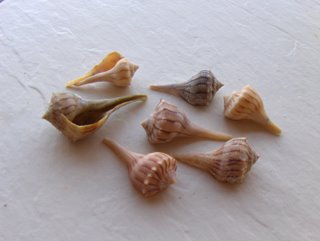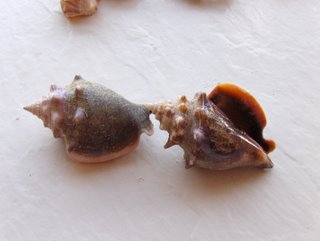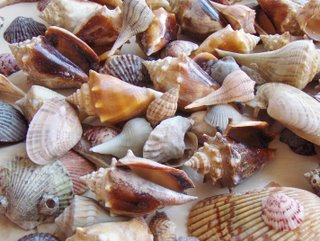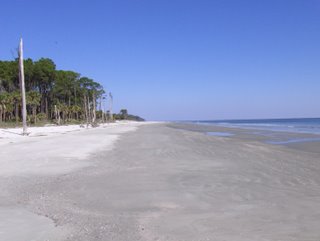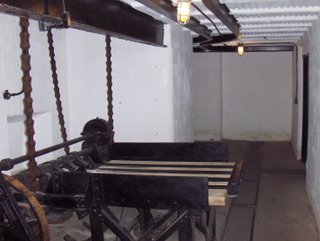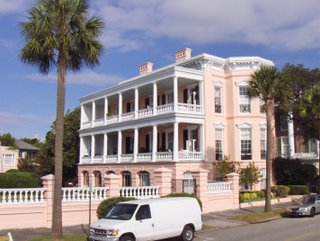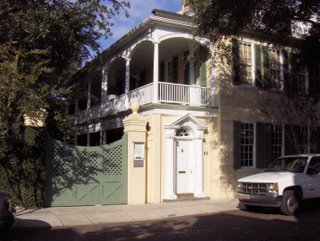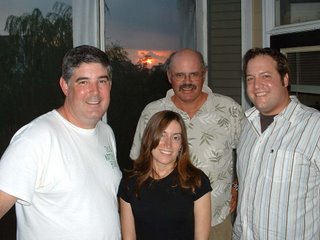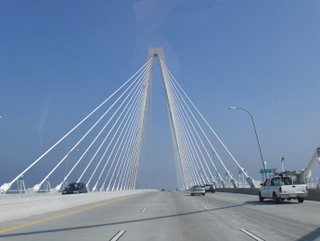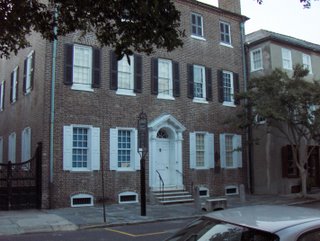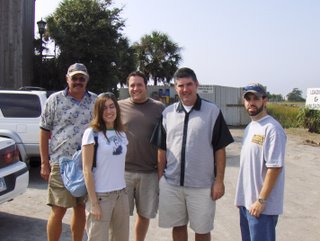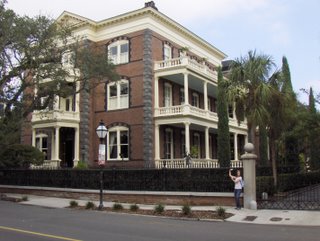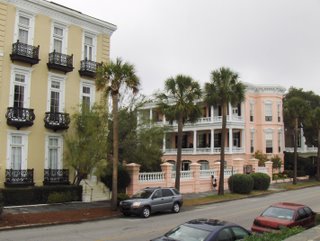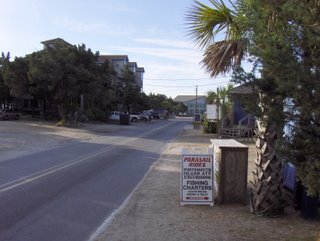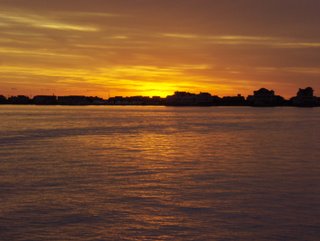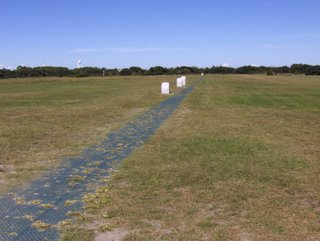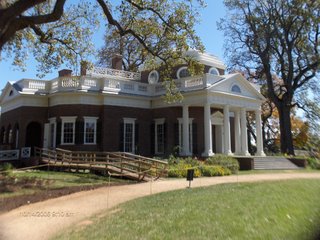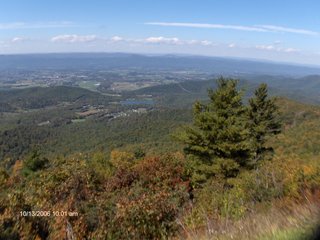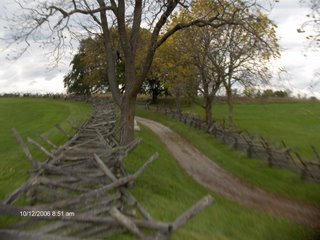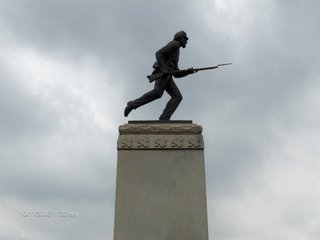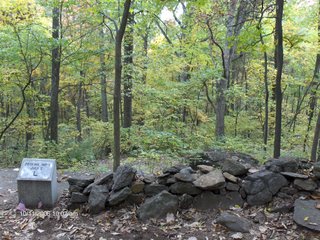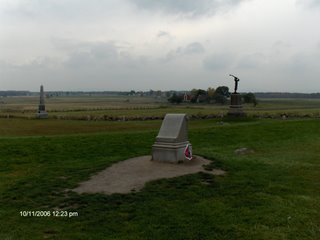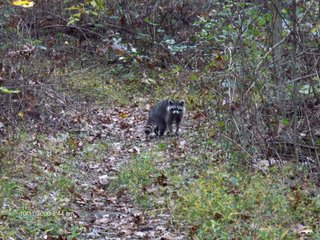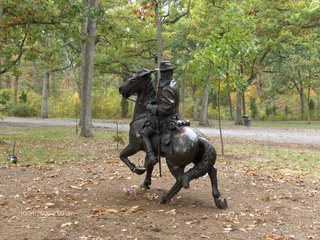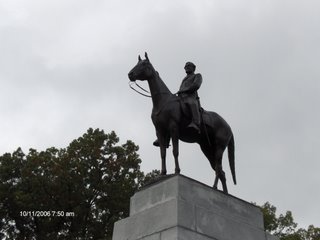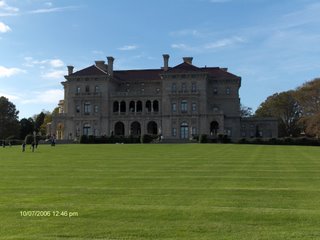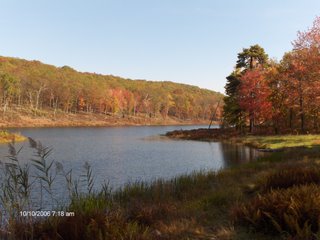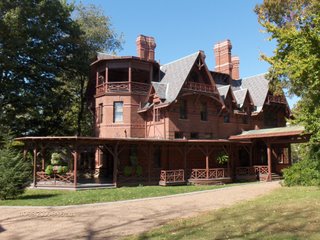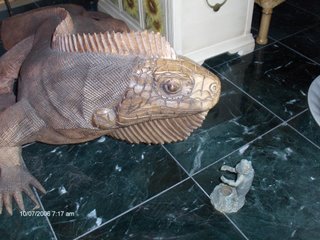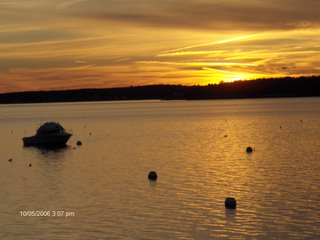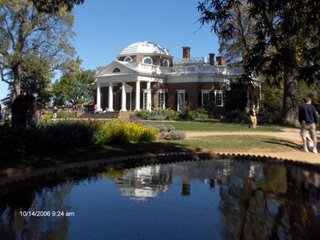
Visited Monticello, Thomas Jefferson's home, today. I had been interested in seeing it for 30, 40 years or so. It proved as fascinating as I had anticipated. The house is not particularly ostentatious...the rooms are fairly small...but it's comfortable and very innovative. For example, there are skylights, unheard of in the U.S. 200 years ago but fashionable in France...Jefferson was a Francophile from his years in Paris in the 1780s when he succeeded Benjamin Franklin as the U.S. ambassador to France.
At Monticello TJ also had storm windows; sliding glass doors; dumbwaiters; and a writing device with two pens connected to each other by wires and pulleys, or something. When Jefferson took one pen and wrote a letter, the other pen copied what he was writing onto another sheet of paper. Pretty good for a bloke who didn't have an HP copier or even an old Xerox! He had a unique sleeping arrangement where his bed was in an open alcove between his study and his bedroom. If he got out of bed to the left, he was in his bedroom; if he exited on the right he could go straight to letter writing in his study.
By his own admission, Jefferson was addicted to reading. He wrote something like 20,000 letters a year. He accumulated a library of 7,000 volumes, one of the largest in North America two centuries ago. And, he took weather observations faithfully every day at dawn and 4 PM for many decades. Indeed, he has been credited with starting the move toward establishment of a federal weather service due to his detailed observations and his scientific interest in weather. He determined the average growing season and annual precipitation of his region with precision.
I reckon that Jefferson and I would have gotten on well!
Although Jefferson was a world renowned scientist, politician, and author during his lifetime, like the rest of us, he was fallible. Though he ran his plantation diligently, he didn't make money and was about $100,000 in debt when he died...the equivalent of 2-3 million dollars today. Though he claimed to detest the institution of slavery, he owned an average of about 200 slaves and only freed two of them during his lifetime, and five more in his will. And DNA testing of the descendants of both families indicate that he almost certainly fathered a child by one of his slaves, Sally Hemings, in 1808, and probably fathered more children with her as well. On the other hand, in 1808 he had been a widower for 26 years, and he was 65 years old! His situation here engenders a certain amount of sympathy on one hand and admiration on the other.

